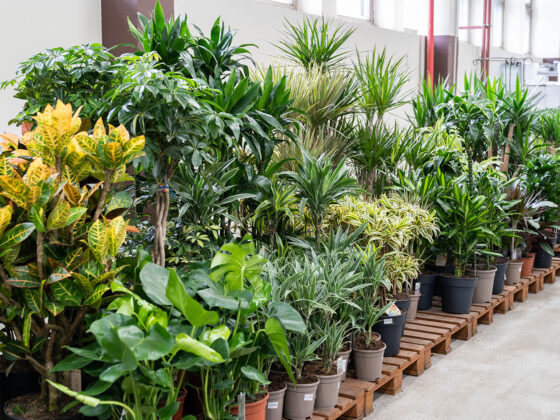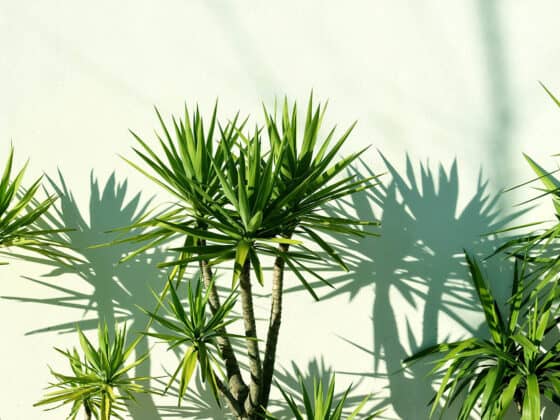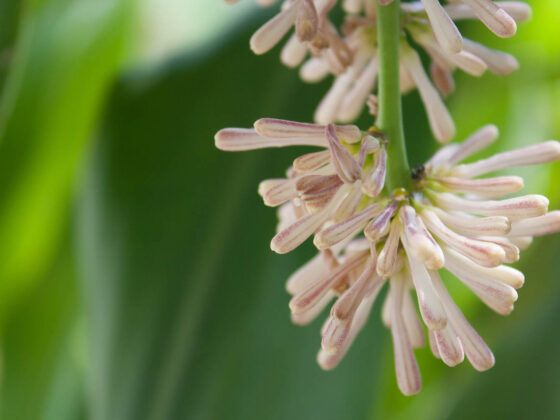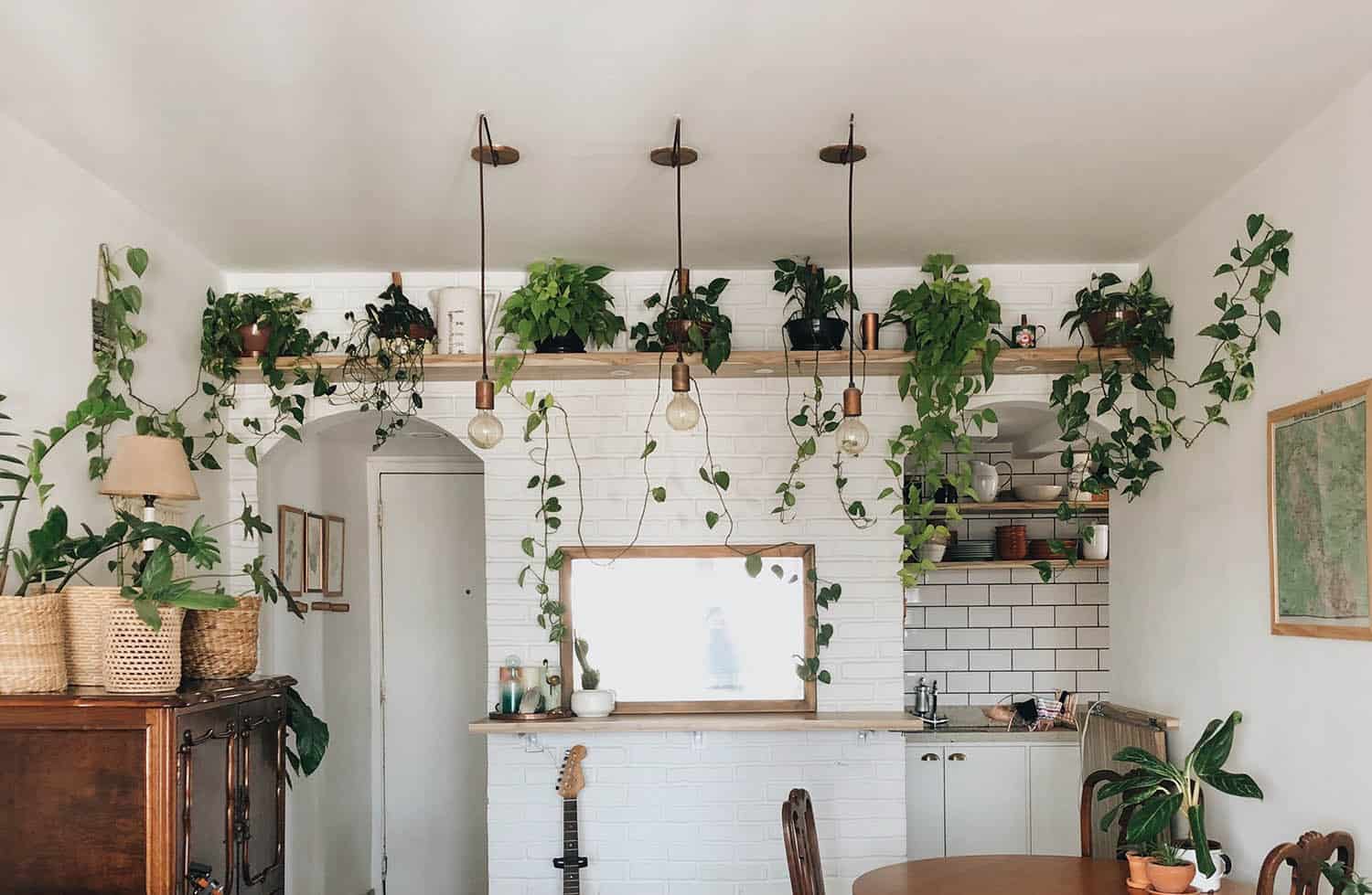Dracaenas make ideal houseplants, and there are so many varieties that you can amass quite a collection of them. Dracaenas are great for adding a lush tropical feeling to parts of the house that don’t get a ton of light, and since they grow slowly, they don’t need a lot of attention or pruning. However, you may find you need to cut back your Dracaena from time to time, just to keep it looking its best.
Dracaenas can be pruned to create a more attractive appearance or to propagate the cuttings and grow a new plant. You can also prune a Dracaena to encourage the stems to branch and become fuller. And any dead or dying parts of a Dracaena should be removed to keep the plant looking its best.
Most varieties of Dracaena grow a collection of leaves toward the top of a cane but no foliage on the lower section. Some types look tree-like and sculptural, while others are leafy and lush. Regardless of which type of Dracaena you have, the process for pruning them is the same.
Why Dracaenas Need to Be Pruned
There are several main reasons that a Dracaena owner might choose to cut back their plant. The most common one is to change the size or appearance of the plant by making the stems shorter. Trimming a Dracaena this way concentrates the foliage lower on the stem and also encourages the stem to branch out.
You might also want to prune your Dracaena to propagate it. Propagating Dracaena cuttings is easy, so this is an excellent option if you want to grow your plant collection without spending any money. Depending on how much you prune the plant, you may be able to get several new plants from a single Dracaena stem.
Finally, maintenance pruning is the practice of removing any damaged, diseased, or otherwise unhealthy growth. Even if you never need to do more substantial pruning, you should do maintenance pruning regularly. This will improve your plant’s appearance and also support its overall health.
The Best Time of Year to Prune Dracaenas
The best time of year to trim back your Dracaena is right before the most active growing seasons – so in spring or early summer. This gives your plant the best chance to produce new growth before the winter season sets in.
Try to avoid trimming back a Dracaena when it’s already stressed, such as after moving its location or allowing it to get too cold. However, if you are pruning as a last-ditch effort to save your dying plant, those rules are out the window. We’ll talk more about what to do in that case a little later in the article.
Reasons to Prune Your Dracaena
Cutting back your Dracaena is not a difficult process; in fact, probably the hardest part is determining whether or not you should do it. When deciding about pruning your Dracaena, start with your end goal in mind (size, shape, plant health) and then start planning. The sections below will give you some guidance on how to get the result you want.
#1 Prune For Size or Appearance
Signs that it might be time to prune your Dracaena include if it is getting too tall for your space or becoming top-heavy. Many Dracaena species have most of their foliage concentrated at the very top of the cane. Over time, they can start to look spindly and awkward as the cane gets longer and longer. While some people like that look, other Dracaena owners would rather have more compact, filled-in foliage.
Dracaenas don’t grow quickly, but some varieties can get quite tall. Dracaena marginatas, for example, can sometimes grow so tall that they reach the ceiling. Their trunks might stretch and twist around to get closer to the light source or to accommodate a space constraint. While it can take years for a Dracaena to reach that height, many people do grow these plants successfully for decades.
If your Dracaena is falling over or the top of the plant is getting close to the ceiling, you will most likely want to prune it. You can remove as much or as little of the upper cane as you like, giving you a lot of control over the size of your plant after pruning.
#2 Encourage Your Dracaena to Branch by Pruning
Many Dracaena varieties grow as a single cane or trunk with leaves at the very top. However, it is possible to get a Dracaena to branch with strategic pruning. After cutting off the top portion of the cane, 2 or 3 stems will usually emerge from the top nodes that are left behind.
If you want to get a fuller and bushier look, this is one of the best ways to do it. You can also propagate the pieces you removed and plant them in the same pot. For more information about making your Dracaena look fuller and bushier, read through my other article on the topic: How to Encourage Your Dracaena to Branch and Grow Bushier.
#3 Prune to Save Healthy Portions of a Dying Dracaena
I mentioned previously that you may want to cut your Dracaena in an effort to save it. This could be the case if the plant has been damaged severely in some way, developed root rot, or maybe has a serious pest problem. If you think there’s no possibility that your original plant can be saved, you might still be able to propagate the healthy stems into a new Dracaena plant.
Dracaenas are incredibly resilient plants, and I’ve heard stories about seemingly-dead ones being tossed in a corner, only to pop out new growth the following spring. So it’s hard to know exactly when you need to take the drastic measure of taking cuttings to try to save some part of the plant. Use your best judgment, especially if there is any damage to the roots since that can be especially difficult to remedy.
Likewise, don’t be shy about pruning off any dead, dying, or diseased foliage. Your Dracaena may look a little bare for a while, but it will come back stronger than ever with healthy growth in time. It is better not to keep unhealthy leaves on your plant, so this type of pruning is actually beneficial in the long run.
Steps For Pruning a Dracaena
These steps should be used for large-scale pruning of canes or stems. Maintenance pruning to remove leaves is covered in the next section.
- Plan your cuts. Dracaenas usually have a lot of nodes on each stem, so you don’t need to be too careful about where you cut. Try to cut between two nodes, where the stem is narrower. Remember that new growth will emerge from the node directly below the cut.
- Sterilize a sharp garden knife, then use it to cut through the stem at a 45-degree angle.
- Continue to provide your Dracaena with normal care. New growth should start to emerge within a few weeks.
You might be thinking: Wait, I just cut all the leaves off my plant! Won’t it die? No, Dracaenas actually don’t need their leaves to survive. They can be cut back to a bare stem with no problem, and new plants can also be propagated from stem cuttings without leaves.
How To Remove Dead or Dying Foliage
Pruning off dying, damaged, or diseased leaves is an even simpler process than structural pruning, and you can do this any time of year. It is not stressful for plants to be trimmed back this way.
Using your sterilized garden shears, simply snip off any unhealthy leaves as close as possible to the stem. Make sure you don’t accidentally cut into the stem. Then continue to care for your plant as usual.
Be aware that a new leaf may emerge where you’ve cut off the old leaf, but that node may not produce any additional leaves in the future. In most cases, there will be enough other foliage that it will not be noticeable. However, if you have to cut off a lot of the leaves, you might want to consider removing the whole top section of the stem as described in the section above.
Best Tools for Pruning Dracaenas
In general, you shouldn’t need too many special tools to prune Dracaenas. The most important thing to keep in mind is that your cutting tool needs to be up to the job. Dracaenas sometimes have thick stems that can be difficult to cut cleanly. Your cutting tool should be sharp enough and big enough to handle the task.
- For pruning thick branches and trunks: Pruning Shears or Pruning Knife
- For maintenance pruning: Pruning Scissors
- For disinfecting cutting tools before pruning: 70% Rubbing Alcohol
These are just suggestions, so if you have some similar tools feel free to use those instead. Dracaenas do not need any special treatment since they are so tough.
Putting It All Together
Dracaena pruning doesn’t need to be an intimidating process, and luckily it does not need to be done often. However, it can definitely be scary to remove all of the leaves from your plant and be left with bare stems. Just make sure you plan ahead to make cuts where you want them, and trust that Dracaenas are resilient.
Even if you make a mistake, your plant will likely be able to bounce back. And after your first time pruning a Dracaena, you’ll have plenty of confidence to do it again whenever it’s necessary in the future!















